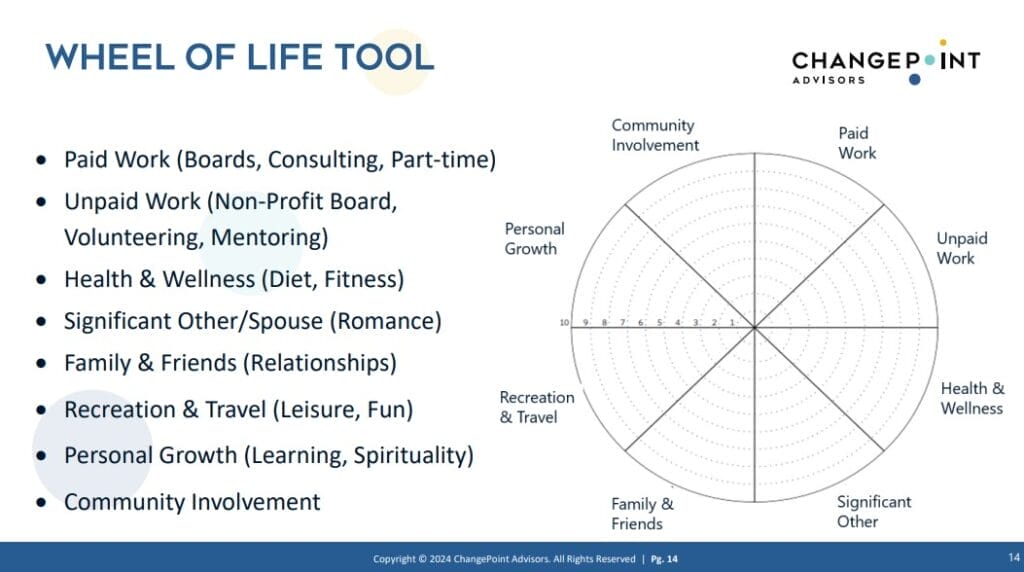A successful plan for retirement—or life after full-time work—is like a three-legged stool. Many MSP business owners and entrepreneurs focus on just two of the legs, a financial plan and a healthcare plan, but neglect the third leg, a life plan.
As a result, the entire stool topples over, causing your retirement or life after full-time work to feel unfulfilling or lonely, according to Sarah Friedell O’Connell, president of ChangePoint Advisors, a consultancy for senior executives at points of transition.
As a business owner, it’s likely that your self-worth and pride are intertwined with your business’s success story, notes O’Connell, who spoke to MSPs at TMT’s annual IT Sales and Marketing Boot Camp in Nashville earlier in the month. But what happens when you’re no longer part of that business you worked so hard to build?
The Trouble With Paradise
This disconnect is why so many former business owners continue to identify themselves with their previous role, even after they’re no longer working full-time. It’s also why, of the 30% of owners who successfully sell their company, a staggering 75% regret it a year later, according to data from PricewaterhouseCoopers.
Need more evidence? “Harvard Medical School has a study that showed that approximately a third of retirees report feeling some sort of depression in the first few years of retirement,” says Friedell O’Connell. “And that’s a shame. That’s unnecessary. It’s supposed to be an amazing time in life.”
And it can be, with the proper retirement planning, says Friedell O’Connell, who teaches entrepreneurs and business leaders how to start laying the groundwork for life after work now, so they can enjoy whatever is next to the fullest, and not feel listless and lost.
Finding Your Path
The typical retirement happens in four phases, she explains:
Vacation mode! You finally take that backpacking trip you’ve been putting off for years and cross a few things off your bucket list. It’s enjoyable at first, but quickly becomes boring.
“When [your work routine] ends, initially it’s great because you have freedom, flexibility, autonomy, and lots of time,” says Friedell O’Connell. “But not having any structure or routine can be stressful for people. So, you have to create some sort of routine, but you don’t have your identity [as a business leader] anymore. Who are you?”
Loss and lost. You’ve lost your routine, identity, relationships, and purpose. Because you no longer have all those built-in social relationships, you’ll have to actively seek out social interaction to avoid feeling lonely.
Trial and error. You’re experimenting with how to regain a sense of contribution and purpose.
Rewire and reinvent. You find your new life mission and ways to be of service to those that matter. With life planning, you can ease the way to this fourth phase.
Building Your Future
Here are five essential steps you can take now to ease the way to post-work happiness:
1. Evaluate your time. Using a tool such as a time allocation wheel, assess how you’re spending your time today, and how you’d like to spend it in the future. This could include activities such as paid or unpaid work, community involvement, hobbies, and family time. Considering how you’d like to spend your free time after retirement will help you continue to feel fulfilled.

2. Find your fulfillment. What are your sources of fulfillment, satisfaction, and joy? These are the activities and relationships you’ll want to pour your time into. This is the time to evaluate how you’ll find purpose post-work and look forward to doing those things you’ve always wanted to do, but never had the time. True happiness is rooted in friends, family, and service to others, not wealth and power, says Friedell O’Connell, referencing author Arthur Brooks.
3. Assess your relationships. Having a robust social network and support system goes a long way to keeping yourself healthier, happier, and alive longer. There’s no understating the importance of community, so prioritize those core relationships as you step into the next phase.
4. Monitor your health. Retirement doesn’t mean you’re too old to function or ready for the rocking chair. In fact, it’s now a third of your life. Friedell O’Connell pointed to data from authors Graham Ward and Isabelle Lebbe who wrote in Fortune Magazine: “Today, a typical retiree can reasonably expect to live another 20 to 30 years, ideally in good health, provided they continue to exercise both body and mind.”
RELATED: Dr. Peter Attia: Busy MSP Business Owners Can Make One Shift To Live Long AND Well
5. Develop your retirement vision. Evaluate how you’ll continue to make a difference in the world and fill your days without your current career. These questions will help you avoid feeling like you lack purpose and drive after retirement. And make sure to involve your partner in these conversations!
“I would encourage you to start [thinking about this] right now—what do you want your life to be like? What’s fun for you? What do you love to do? What does the world need? Where can you add value? That’s the place to start,” says Friedell O’Connell.
Retirement doesn’t have to be daunting. While it will always be a big life transition, with plenty of pre-planning and contemplation, it doesn’t have to be a negative one. Here’s to many happy retired years!












